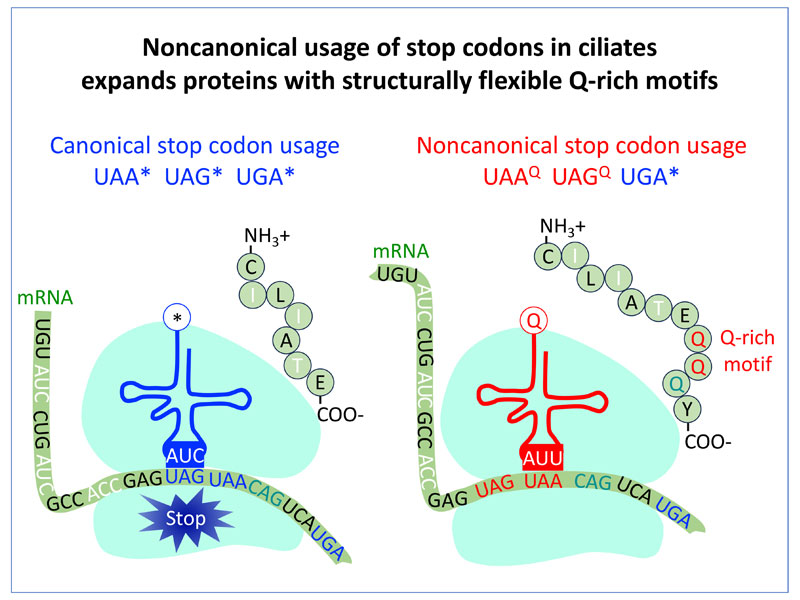Noncanonical usage of stop codons in ciliates expands proteins with structurally flexible Q-rich motifs
Dr. Wang, Ting-Fang - February, 2024
Serine(S)/threonine(T)-glutamine(Q) cluster domains (SCDs), polyglutamine (polyQ) tracts and polyglutamine/asparagine (polyQ/N) tracts are Q-rich motifs found in many proteins. SCDs often are intrinsically disordered regions that mediate protein phosphorylation and protein-protein interactions. PolyQ and polyQ/N tracts are structurally flexible sequences that trigger protein aggregation. We report that due to their high percentages of STQ or STQN amino acid content, four SCDs and three prion-causing Q/N-rich motifs of yeast proteins possess autonomous protein expression-enhancing activities. Since these Q-rich motifs can endow proteins with structural and functional plasticity, we suggest that they represent useful toolkits for evolutionary novelty. Comparative Gene Ontology (GO) analyses of the near-complete proteomes of 26 representative model eukaryotes reveal that Q-rich motifs prevail in proteins involved in specialized biological processes, including Saccharomyces cerevisiae RNA-mediated transposition and pseudohyphal growth, Candida albicans filamentous growth, ciliate peptidyl-glutamic acid modification and microtubule-based movement, Tetrahymena thermophila xylan catabolism and meiosis, Dictyostelium discoideum development and sexual cycles, Plasmodium falciparum infection, and the nervous systems of Drosophila melanogaster, Mus musculus and Homo sapiens. We also show that Q-rich-motif proteins are expanded massively in 10 ciliates with reassigned TAAQ and TAGQ codons. Notably, the usage frequency of CAGQ is much lower in ciliates with reassigned TAAQ and TAGQ codons than in organisms with expanded and unstable Q runs (e.g. D. melanogaster and H. sapiens), indicating that the use of noncanonical stop codons in ciliates may have coevolved with codon usage biases to avoid triplet repeat disorders mediated by CAG/GTC replication slippage.
